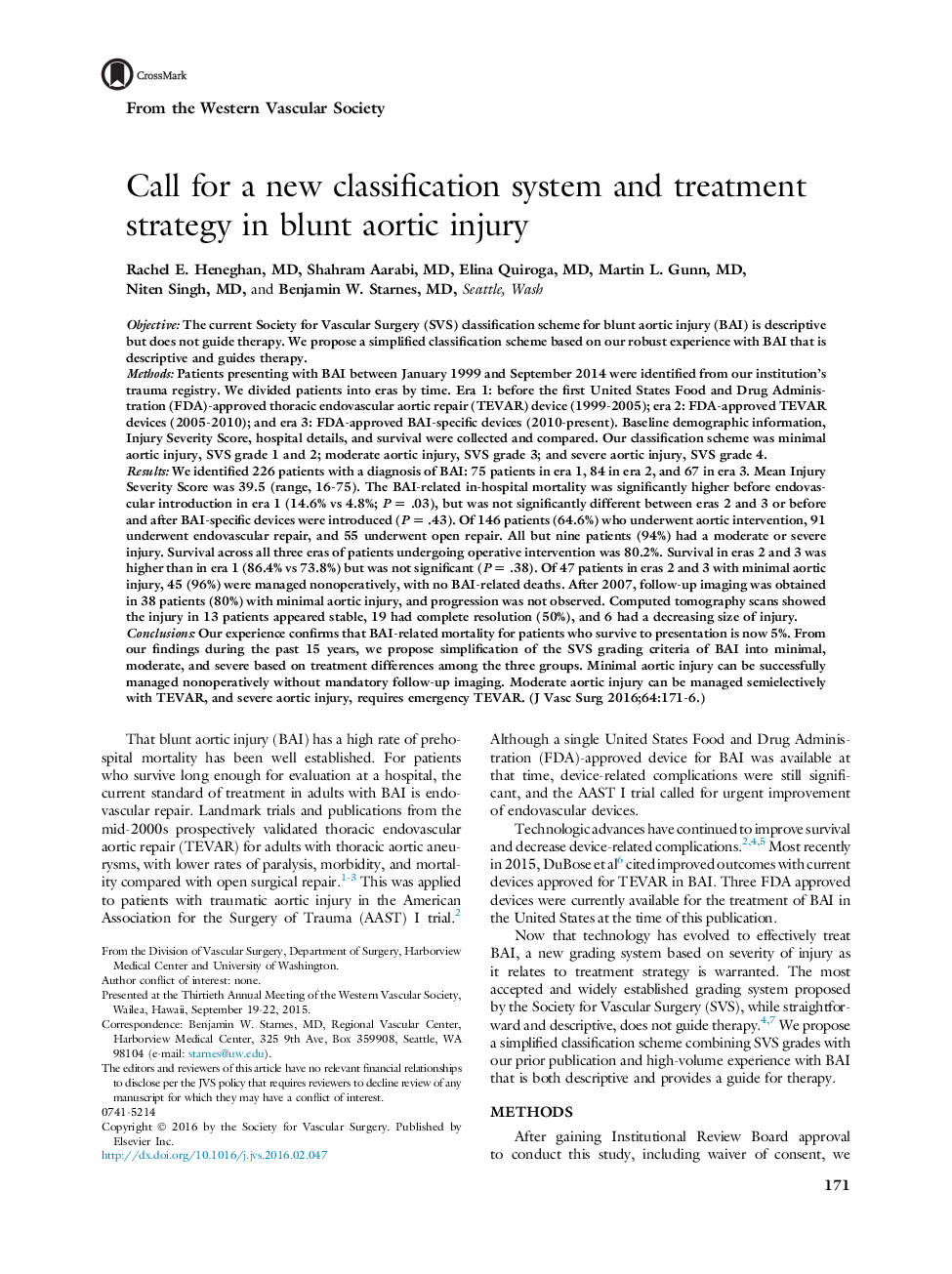| کد مقاله | کد نشریه | سال انتشار | مقاله انگلیسی | نسخه تمام متن |
|---|---|---|---|---|
| 2987593 | 1179805 | 2016 | 6 صفحه PDF | دانلود رایگان |
ObjectiveThe current Society for Vascular Surgery (SVS) classification scheme for blunt aortic injury (BAI) is descriptive but does not guide therapy. We propose a simplified classification scheme based on our robust experience with BAI that is descriptive and guides therapy.MethodsPatients presenting with BAI between January 1999 and September 2014 were identified from our institution's trauma registry. We divided patients into eras by time. Era 1: before the first United States Food and Drug Administration (FDA)-approved thoracic endovascular aortic repair (TEVAR) device (1999-2005); era 2: FDA-approved TEVAR devices (2005-2010); and era 3: FDA-approved BAI-specific devices (2010-present). Baseline demographic information, Injury Severity Score, hospital details, and survival were collected and compared. Our classification scheme was minimal aortic injury, SVS grade 1 and 2; moderate aortic injury, SVS grade 3; and severe aortic injury, SVS grade 4.ResultsWe identified 226 patients with a diagnosis of BAI: 75 patients in era 1, 84 in era 2, and 67 in era 3. Mean Injury Severity Score was 39.5 (range, 16-75). The BAI-related in-hospital mortality was significantly higher before endovascular introduction in era 1 (14.6% vs 4.8%; P = .03), but was not significantly different between eras 2 and 3 or before and after BAI-specific devices were introduced (P = .43). Of 146 patients (64.6%) who underwent aortic intervention, 91 underwent endovascular repair, and 55 underwent open repair. All but nine patients (94%) had a moderate or severe injury. Survival across all three eras of patients undergoing operative intervention was 80.2%. Survival in eras 2 and 3 was higher than in era 1 (86.4% vs 73.8%) but was not significant (P = .38). Of 47 patients in eras 2 and 3 with minimal aortic injury, 45 (96%) were managed nonoperatively, with no BAI-related deaths. After 2007, follow-up imaging was obtained in 38 patients (80%) with minimal aortic injury, and progression was not observed. Computed tomography scans showed the injury in 13 patients appeared stable, 19 had complete resolution (50%), and 6 had a decreasing size of injury.ConclusionsOur experience confirms that BAI-related mortality for patients who survive to presentation is now 5%. From our findings during the past 15 years, we propose simplification of the SVS grading criteria of BAI into minimal, moderate, and severe based on treatment differences among the three groups. Minimal aortic injury can be successfully managed nonoperatively without mandatory follow-up imaging. Moderate aortic injury can be managed semielectively with TEVAR, and severe aortic injury, requires emergency TEVAR.
Journal: Journal of Vascular Surgery - Volume 64, Issue 1, July 2016, Pages 171–176
